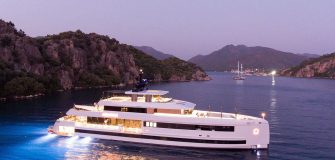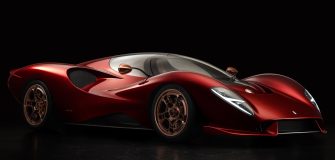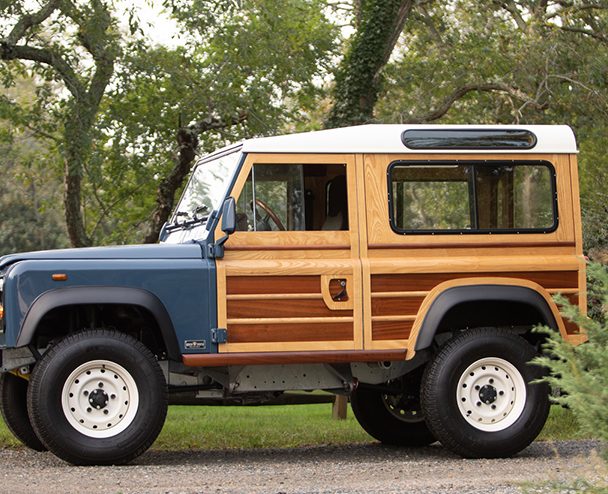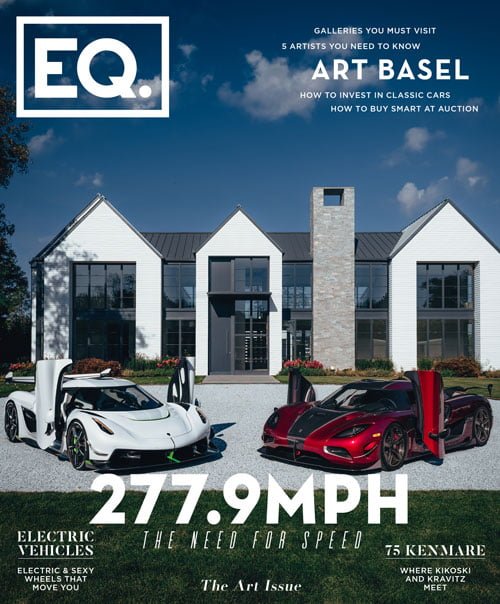277.9 MPH
What has driven Koenigsegg’s Need For Speed
Written by Jack Williams | Photography by Dan Wagner
Since he was five years old, Christian von Koenigsegg had wanted to create the world’s fastest car. His vision was inspired by a Norwegian movie about a bicycle repairman who, with the help of his friends, built an incredible racing machine that was able to topple even the most established brands.
Now, aged 47, and with a number of world records behind him–including that most desired of titles, the world’s fastest production car–the questions Koenigsegg asks himself on a daily basis are no longer based on such a solid end point, but are instead about what has now become somewhat of an endless pursuit.
“With a mission to create the ultimate performance car, it’s less of an end goal and more of a moving target carved from our common vision for perfection,” he told EQ Magazine. “That said, we will continue to test the limits on speed, acceleration and performance.”
Those limits have been severely tested since August 1994, when a 22-year-old Koenigsegg set up Koenigsegg Automotive, a small operation run out of a workshop in the town of Olofström, a coastal town of around 7,000 people in the southeast corner of Sweden. With the goal of creating a luxury sports car, but also facing the realities of living in a country that was coming out of a recession, Koenigsegg studied technical manuscripts and old car magazines to plot how he could build his first budget prototype, the CC.
That open-top sportscar allowed Koenigsegg to display his vision and the results of his grassroots operation to the automobile world, allowing racing drivers to test the CC, as well as gathering aesthetic approval by bringing the CC to the likes of the 1997 Cannes Film Festival.
By 2000, Koenigsegg had its first production prototype, the CC8S, which was displayed at the Paris Motorshow. The company sold six of the high-performance vehicles over the next three years, picking up record after record after record, helping to increase the low-production-high-demand vehicles’ profile worldwide. In 2002, it won the World’s Most Powerful Production Engine, for topping out at 488kW (665hp).
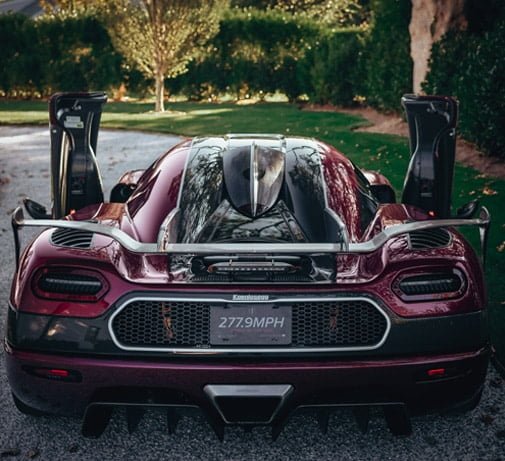


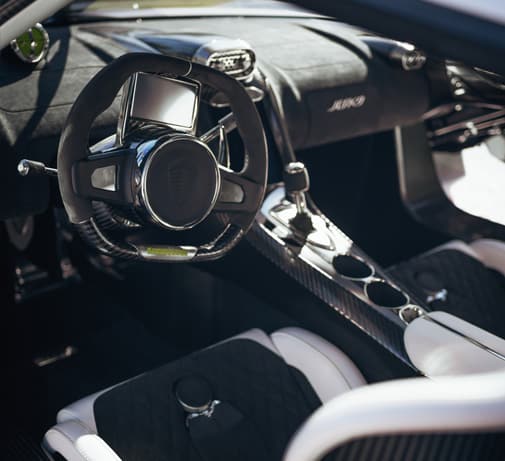
Two years later, in 2004, the Koenigsegg CCR won the World’s Most Powerful Production Car, which had a total output of 806hp. And then, in 2005, the CCR claimed the title of World’s Fastest Car of Any Kind, when it hit 387.86km/h (241mph).
But in hitting such milestones, speed wasn’t solely the objective. “At Koenigsegg, our focus is on holistic road and track experience,” Koenigsegg explained. There is definitely an objective behind why we do what we do in terms of record breaking. Sure, the power needed to reach a high top speed is important, but it’s total performance and handling that matters the most for us.”
This approach to the all-around driving experience has taken us to what Koenigsegg has today: the two vehicles featured on the cover of this magazine, the Agera RS and the Jesko.
The Agera RS, with its top speed of 278mph, is the current record holder for the fastest production car in the world. The Jesko, named after Christian’s father, whom he credits with helping support the company financially and with his business acumen, will be the company’s largest run of production cars, released in 2020. Koenigsegg has claimed the Jesko could break the 300mph barrier. And, despite being priced at a whopping $2.8 million, every vehicle has already been sold.
“The Koenigsegg owner is a sophisticated enthusiast who already maintains an impressive collection of exotic cars,” said Paul Dumont, general manager of Manhattan Motorcars, which has dealt with 10 Koenigseggs in the U.S. over the past five years. “We see a common thread of self-made entrepreneurs, which speaks to the appeal of the technologically innovative hypercar they have purchased.”
Koenigsegg, now worth an estimated $100 million, has never abandoned that entrepreneurial spirit, and he still demands his staff focus on even the most minute of details–just like he did building the CC 25 years ago. This approach sees craftsmen at the company’s Ängelholm factory spend upwards of three weeks polishing just a suspension component. For the environmentally conscious buyer, the company also has plans to build a CO2-neutral supercar and is also producing the Regera, Koenigsegg’s take on a new breed of hybrid, capable of running on E85 bioethanol.
“The company is growing alongside our scale of production and it is exciting to see what the future holds for us,” Koenigsegg said. Asked whether so many developments on both the business and engineering side of things make it difficult to still channel the tinkering spirit of that 22-year-old who was determined to build his dream car on a tight budget, he said: “This is my baby. I love to stay hands-on.”
Related Articles
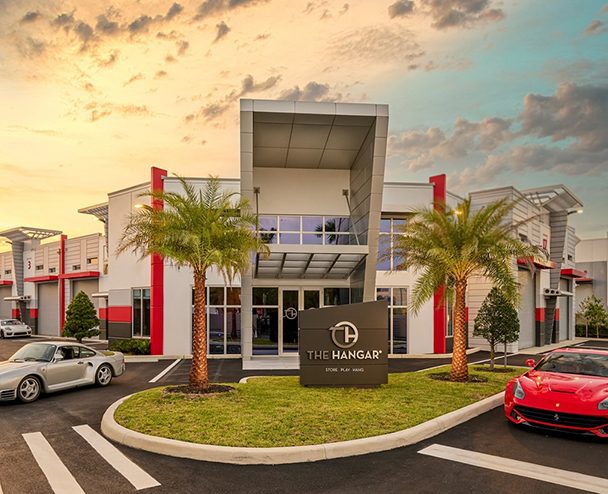
Redefining Real Estate for Car Collectors
An Exclusive Interview with Scott Cunningham, Founder of The Hangar Group
Read More
ADVERTISE WITH EQ
ebunn@equicapmag.com
dhilpert@equicapmag.com
Popular Posts

